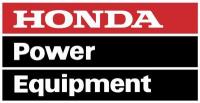Buying landscape equipment? Here are some tips to finish in the green (with related video).
Here are some pointers on buying the right grounds maintenance equipment from William Walton of Honda Power Equipment.
Editor’s note: Value, fuel economy and durability of equipment have emerged as top buying considerations for government grounds and landscape managers interested in making the most of their investment. Recent grounds maintenance marketing research highlighted these criteria.
With government budgets getting tight in some jurisdictions, making the right grounds equipment-buying decision is becoming more important. Here are some pointers on the subject from an equipment expert.
When it comes to landscaping commercial property, a little green can go a long way to infuse natural beauty into urban environments. New, old and anywhere in between, government properties call for attractive landscaping.
Enter the grounds professional. The most successful of these landscapers know the important tricks of the trade, chiefly that the right tools for the job help save time and money. In other words, knowing how to stock an outdoor power equipment arsenal with the latest generation of landscaping machinery and tools is job one.
According to the experts at Honda Power Equipment, manufacturer of a range of power equipment for rental, professional and consumer applications, today’s outdoor power equipment models are stronger, lighter, quieter with less vibration, more fuel efficient, and safer to handle.

“Commercial landscaping professionals should concentrate on investing in three fundamental equipment types: the tiller, the trimmer and the lawn mower,” says Steve Forslund, an engineer at Honda Power Equipment. “Achieving beautifully landscaped property starts with the sensible and skilled purchase of outdoor power equipment. By extension, the buyer should do some homework, knowing that there are many makes and models available with countless features and benefits.”
Selecting the right tiller
When it comes to blazing paths, especially for new landscape installations where the ground can be hard or rocky, landscape professionals know that the job usually starts with tilling. A tiller actually acts like a power shovel — but unlike a shovel, this piece of power equipment quickly breaks up compacted soil or preps holes for planting.
“Tillers work well for garden cultivating as well as for deep earth turning in industrial landscaping,” says Forslund. “Ideal for pre-planting ground preparation, today’s models are designed and manufactured in three main types — handheld lightweight and portable mini-cultivators, rear-tine machines for medium-sized areas, and front tine tillers for heavier-duty jobs.”
Choosing the right tiller depends on a number of factors. In short, the size and type of job are directly proportional to the size and power of the tiller. Start by measuring the square foot of the area to be tilled as well as the grade and hardness of the soil. For instance, a lightweight, maneuverable tiller with a tilling width of approximately nine inches is ideal for cultivating small beds or plots where operation close to plants and other structures would likely be the case. Bigger jobs, such as prepping soil to lay sod or creating a bed for the first time, require a reliable, powerful earth-churning machine with extra size, durability and strength.
“The advanced, heavy-duty design of a rear-tine tiller with a tilling swath of 20 inches, for example, meets the extreme durability requirements of commercial and rental consumers,” says Forslund.
Different tiller models come with a multitude of features and benefits that are useful for various aspects of a given job. Depending on the model, many rear- and front-tine tillers are designed with multi-speed transmissions and have drag bar operation as well as adjustable tilling heights or depth stakes that help the operator adjust to the level of earth. In addition, tillers often incorporate borders/edgers, aerator tines, dethatchers, tine extensions and furrow attachments. “Each of these items can alter the depth, appearance and width of the sections of earth being cultivated or cleared,” adds Forslund.
A little common sense in purchasing the right tiller goes a long way. “A tiller is an investment and landscape professionals should select carefully to make the most of their purchase,” says Forslund. “In surveying the available options, landscapers should consider ease of starting, low emissions, high fuel economy and simple, quiet operation.”
Finally, before leaving the dealer or retail outlet with any new earth-moving companion in tow, be sure to purchase the correct safety equipment. “When operating a tiller, it is essential to wear eye protection and gloves for safety,” says Forslund.
William Walton is senior marketing manager at Alpharetta, Ga.-based Honda Power Equipment. Honda dealers do business with many governments around the U.S.
This video shows how the Honda VersaTool tackles many trimming, blowing, pruning, cultivating and edging tasks to keep grounds clear.




















